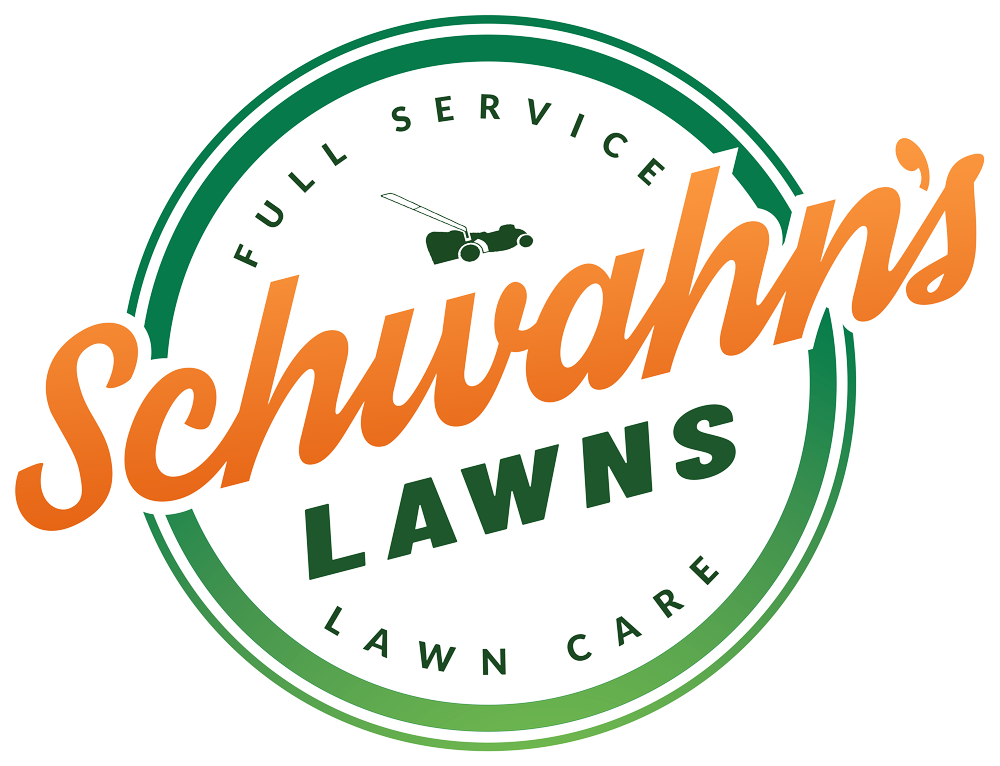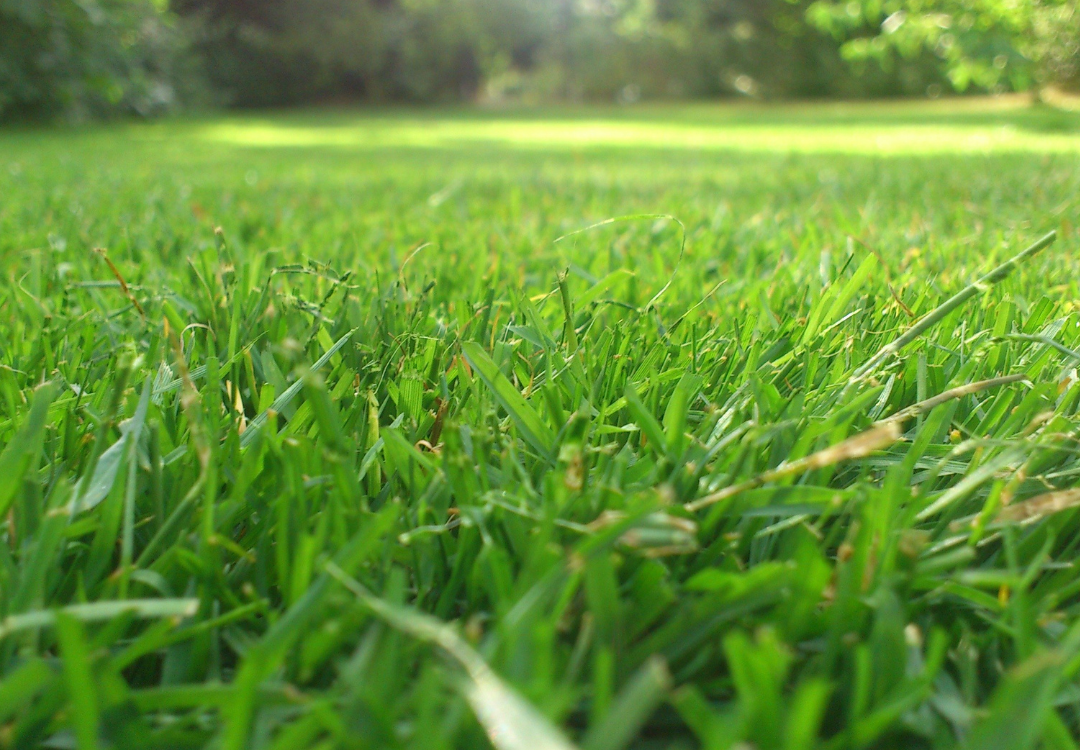By the St. Augustine Specialists at Schwahn’s Lawns | September 2025
Drawing from over 20 years of experience maintaining St. Augustine lawns throughout Clearwater and Pinellas County, this guide provides everything homeowners need to achieve thick, healthy, beautiful St. Augustine grass year-round.
🌿 Why St. Augustine Grass Dominates Clearwater Lawns
Over 75% of Clearwater lawns feature St. Augustine grass varieties—and for good reason. This warm-season grass thrives in coastal Florida’s challenging conditions, offering excellent salt tolerance, superior shade adaptation, and the thick, lush appearance that defines beautiful Florida lawns. From Clearwater Beach waterfront properties to inland neighborhoods, proper St. Augustine care creates the stunning landscapes that enhance property values and neighborhood appeal.
St. Augustine grass (Stenotaphrum secundatum) isn’t just another lawn option in Clearwater—it’s the proven choice that delivers exceptional results when properly maintained. Understanding the specific needs of this popular grass variety is essential for achieving the thick, green lawn that serves as your property’s foundation and your family’s outdoor living space.
Expert St. Augustine Care for Your Clearwater Lawn
Skip the guesswork with professional St. Augustine grass care tailored to Clearwater’s unique coastal environment.
Understanding St. Augustine Grass Varieties in Clearwater
Not all St. Augustine grass is identical. Different cultivars offer varying characteristics that affect appearance, maintenance requirements, and performance in Clearwater’s coastal conditions. Selecting the right variety for your specific property conditions is crucial for long-term success.
| Variety | Shade Tolerance | Salt Tolerance | Chinch Bug Resistance | Mowing Height | Best For |
|---|---|---|---|---|---|
| Floratam | Low | Excellent | Excellent | 3-4 inches | Full sun, coastal areas |
| Palmetto | Excellent | Good | Good | 2.5-4 inches | Shaded properties |
| Bitter Blue | Good | Good | Moderate | 1-3 inches | Premium lawns |
| Captiva | Good | Very Good | Good | 2-3.5 inches | Balanced properties |
| Classic | Fair | Good | Poor | 3-4 inches | Budget installations |
Choosing the Right Variety for Your Clearwater Property
- Coastal properties (within 2 miles of water): Floratam for maximum salt tolerance
- Heavily shaded yards: Palmetto for superior shade adaptation
- Premium properties: Bitter Blue for finest texture and appearance
- Most residential properties: Captiva for balanced performance
Year-Round St. Augustine Care Schedule for Clearwater
Spring Care (March – May)
Peak Growth Preparation
- Fertilization: First balanced application (16-4-8 or similar)
- Pre-emergent: Prevent crabgrass and other annual weeds
- Mowing: Resume regular schedule at proper height
- Irrigation: Check and adjust sprinkler systems
- Soil testing: Determine pH and nutrient needs
- Chinch bug prevention: Begin monitoring and preventive treatments
Summer Care (June – August)
Heat Stress Management
- Iron applications: Maintain green color during fertilizer ban
- Deep watering: 2-3 times weekly, early morning
- Pest monitoring: Weekly chinch bug inspections
- Disease prevention: Watch for brown patch and gray leaf spot
- Proper mowing: Never remove more than 1/3 of blade height
- Hurricane prep: Ensure good drainage and debris removal
Fall Care (September – November)
Recovery and Strengthening
- Resume fertilization: Fall feeding program begins October 1st
- Overseed thin areas: Fill in summer damage or wear patterns
- Disease treatment: Address any fungal issues before winter
- Storm damage repair: Fix hurricane-related problems
- Winter preparation: Strengthen grass for cooler months
- Equipment maintenance: Service mowers and irrigation
Winter Care (December – February)
Reduced Activity Period
- Minimal fertilization: Light feeding only if needed
- Reduced mowing: Adjust to slower growth rate
- Cold protection: Avoid foot traffic on frosted grass
- Brown patch monitoring: Peak season for this common disease
- Planning: Design landscape improvements for spring
- Soil amendment: Add organic matter during slower growth
Proper Mowing Techniques for St. Augustine Grass
Correct mowing is perhaps the most critical aspect of St. Augustine grass care. Improper cutting height, frequency, or technique can weaken the grass, promote pest problems, and reduce overall lawn health.
Optimal Mowing Heights by Variety
- Floratam: 3.5-4 inches (never below 3 inches)
- Palmetto: 2.5-4 inches (adjust for shade levels)
- Bitter Blue: 1-3 inches (maintain consistent height)
- Captiva: 2-3.5 inches (varies with season)
❌ Common Mowing Mistakes That Damage St. Augustine
- Scalping: Cutting too short exposes stems and promotes weed invasion
- Infrequent mowing: Removing more than 1/3 blade height stresses grass
- Dull blades: Torn grass tips invite disease and create brown appearance
- Wrong timing: Mowing wet grass spreads diseases
- Same pattern: Creates ruts and uneven wear patterns
✅ Professional Mowing Best Practices
- Sharp blades: Clean cuts promote healthy growth
- 1/3 rule: Never remove more than one-third of blade height
- Dry conditions: Mow only when grass is dry
- Weekly schedule: Consistent timing maintains optimal height
- Pattern variation: Change directions to prevent compaction
Fertilization and Nutrition Management
St. Augustine grass has specific nutritional needs that vary throughout the year. Understanding these requirements and timing applications correctly ensures optimal growth, color, and disease resistance.
Annual Nutrition Program
Complete Annual Fertilization Schedule
Spring Applications (March – May)
- Early Spring (March): 16-4-8 or 15-0-15 with micronutrients
- Late Spring (May): 16-4-8 with pre-emergent herbicide
- Application rate: 1 pound nitrogen per 1,000 sq ft
Summer Management (June – August)
- Iron supplements: Iron sulfate or chelated iron monthly
- Micronutrients: Manganese and magnesium as needed
- NO nitrogen or phosphorus (County ordinance compliance)
Fall Recovery (September – November)
- Early Fall (October): 16-4-8 or similar balanced fertilizer
- Late Fall (November): Winterizing formula with potassium
- Focus: Root development and winter hardiness
⚠️ Fertilizer Ban Compliance Alert
Pinellas County prohibits nitrogen and phosphorus fertilizers from June 1 through September 30. Violations result in fines up to $500. During this period, use only:
- Iron sulfate or chelated iron
- Potassium sulfate
- Micronutrient blends
- Organic matter amendments
Common St. Augustine Grass Problems in Clearwater
Chinch Bug Infestations
Chinch bugs are the #1 threat to St. Augustine grass in Clearwater, particularly during hot summer months. These tiny insects cause distinctive damage patterns that homeowners often mistake for drought stress.
Chinch Bug Identification Checklist
- ✓ Irregular yellow patches that turn brown quickly
- ✓ Damage starts in sunny, hot areas near driveways/sidewalks
- ✓ Grass pulls up easily in affected areas
- ✓ Tiny black bugs visible when grass is parted
- ✓ Damage spreads outward from initial spots
- ✓ Peak occurrence: May through October
Professional diagnosis and treatment available: Our certified chinch bug treatment specialists provide rapid identification and effective control.
Brown Patch Disease
Brown patch fungus thrives in Clearwater’s humid conditions, particularly during fall and winter months when temperatures are mild but humidity remains high.
Brown Patch Symptoms:
- Circular brown patches 1-20 feet in diameter
- Dark “smoke ring” around patch edges (sometimes)
- Grass blades with tan lesions and dark borders
- Most active during 70-80°F temperatures with high humidity
Prevention and Treatment:
- Cultural controls: Improve air circulation, reduce nitrogen in fall
- Fungicide applications: Preventive treatments before cool weather
- Water management: Avoid evening irrigation, promote morning drying
- Professional diagnosis: Laboratory testing for accurate identification
Gray Leaf Spot
This disease becomes problematic during hot, humid summer conditions, particularly on newly planted or stressed St. Augustine grass.
Identification and Management:
- Small gray spots with dark borders on grass blades
- Spots eventually turn brown and kill entire blades
- Most severe on recently installed sod
- Treatment requires fungicide applications and stress reduction
Watering Best Practices for Clearwater’s Climate
Proper irrigation is critical for St. Augustine grass health, especially in Clearwater’s sandy soils that drain quickly. Overwatering and underwatering both create significant problems.
Optimal Watering Schedule
Professional Watering Guidelines
Spring/Fall (March-May, October-November)
- Frequency: 2-3 times per week
- Duration: 45-60 minutes per zone
- Amount: 3/4 to 1 inch per week total
- Timing: Early morning (4-8 AM)
Summer (June-September)
- Frequency: 3-4 times per week
- Duration: 60-75 minutes per zone
- Amount: 1-1.25 inches per week total
- Timing: Early morning only (before 8 AM)
Winter (December-February)
- Frequency: 1-2 times per week
- Duration: 30-45 minutes per zone
- Amount: 1/2 to 3/4 inch per week total
- Timing: Early morning, adjust for rainfall
Signs of Watering Problems
Underwatering Symptoms:
- Grass blades fold or curl lengthwise
- Blue-gray color instead of green
- Footprints remain visible on lawn surface
- Increased chinch bug susceptibility
Overwatering Symptoms:
- Fungal diseases (brown patch, gray leaf spot)
- Soft, spongy soil conditions
- Increased weed pressure
- Shallow root development
Professional St. Augustine Grass Care in Clearwater
Take the guesswork out of St. Augustine care with expert services tailored to your specific grass variety and property conditions.
Professional services include:
- ✓ Grass variety identification and assessment
- ✓ Customized fertilization programs
- ✓ Pest monitoring and treatment
- ✓ Disease prevention and management
- ✓ Irrigation system optimization
- ✓ Seasonal care schedule management
Schedule Your St. Augustine Assessment
Call 561-325-9537 or 727-373-6985
Professional vs. DIY St. Augustine Care
While basic maintenance like mowing can be handled by homeowners, successful St. Augustine grass care requires extensive knowledge of timing, products, and techniques that professional services provide.
DIY Challenges:
- Pest identification: Chinch bugs vs. drought stress vs. disease damage
- Product selection: Choosing appropriate fertilizers and pesticides
- Timing accuracy: Critical windows for preventive treatments
- Ordinance compliance: Understanding complex fertilizer restrictions
- Equipment investment: Spreaders, sprayers, soil testing tools
Professional Advantages:
- Expert diagnosis: Accurate identification of problems and solutions
- Commercial products: Access to more effective treatments
- Guaranteed results: Professional warranties and service guarantees
- Time savings: 3-5 hours weekly plus research and shopping time
- Seasonal expertise: 20+ years of local climate experience
For a detailed comparison of costs and benefits, see our guide on professional vs. DIY lawn care for Clearwater homeowners.
Establishing New St. Augustine Grass
Whether renovating damaged areas or installing a completely new lawn, proper establishment techniques determine long-term success.
Soil Preparation
- Soil testing: Determine pH and nutrient levels
- pH adjustment: Maintain 6.0-7.0 pH for optimal growth
- Organic matter: Add 2-4 inches of compost to sandy soils
- Grading: Ensure proper drainage away from structures
Installation Methods
Sod Installation (Most Popular)
- Advantages: Instant lawn, weed-free establishment
- Best timing: March-May or September-October
- Establishment period: 2-3 weeks with proper care
- Initial cost: $0.45-$0.65 per square foot installed
Plugging Method (Budget Option)
- Advantages: Lower cost, good for large areas
- Best timing: Late spring through early summer
- Establishment period: 6-12 months for full coverage
- Initial cost: $0.15-$0.25 per square foot
For comprehensive guidance on all aspects of lawn care in our area, see our complete guide to year-round lawn care in Pinellas County.
Expert St. Augustine Grass Care by Schwahn’s Lawns
Schwahn’s Lawns has specialized in St. Augustine grass care throughout Clearwater and Pinellas County for over two decades. Our certified specialists understand the unique challenges of maintaining St. Augustine grass in Florida’s coastal environment.
St. Augustine Specialty Services:
- • Variety-specific fertilization programs
- • Professional chinch bug monitoring and control
- • Disease prevention and treatment
- • Irrigation system optimization
- • New lawn installation and renovation
- • Seasonal care program management
Learn more about our professional St. Augustine grass care services or explore our complete lawn care programs for Clearwater properties.


